 |
General Information about Madrid

Madrid - a unique city; What comes first into my mind about the capital of Spain? First, I associate Madrid with a young and open city that offers an excellent choice for gourmets. For me, specially the enjoyment of the tapas - the small appetisers typical from there - is simply a part of the mentality. Some other people might think by the catchword Madrid at first on the unique nightlife, while art lovers would first think on the triangle of arts of Madrid - the three art museums El Prado, the Museo Nacional Centro de Arte Reina Sofía and the Museo Thyssen-Bornemisza.
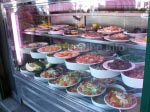
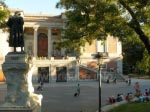
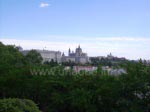
Madrid is obviously versatile and always moving. The warm temperatures attract the people to stay outside and the tourists to come to Madrid. There is a coming and going, but never standstill. For many people, Madrid is another European capital and not very typically spanish. But those who have some background information and visit Madrid will not only see the sightseeings but also experience a spanish flair.
The Significance of Madrid in Spain
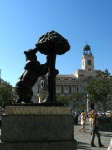
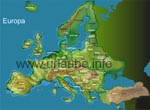
Madrid is located in the centre on the Iberian peninsula and approximately 650 metres above the sea level. Therewith, it is the highest positioned city of Europe, a thing that does permit anyway some hot tempertures in the summer time. Additionally, Madrid is the capital of the autonomous Comunidad de Madrid. The total of 17 Comunidades in Spain are equivalent to our Federal States in Germany; Even though the government and also the parliament are resident in Madrid - the spanish population is still rather attracted to the monarchy, even though they are conform with the political situation. In Madrid, the Spanish King Juan Carlos I resides, but not in the royal Palacio Real but a little outside the city. Meanwhile, the Palacio Real is only used for state visits and special events.
Once arrived in Madrid, one will soon notice that the city is the finance and trade centre of Spain. The Banco de Espaņa, the most important bank of Spain, as also several private banks have their headquarters here. Additionally, in Madrid there is the most important stock exchange of Spain in the Palacio de la Bolsa. Concerning the industrial branches, specially the consumer goods industry of garments and cosmetics, but also the automobile and the electric industry settled in Madrid.

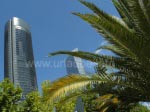
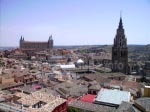
But the significance of Madrid did not experience this significant growing until approximately the year 1970. Before that, Madrid was inconspicuous and not important, and the historical cities Granada, Toledo, Sevilla and Zaragoza were mre important. Additionally, Madrid had a very inconvenient situation, as there is no coast and Madrid was not a trade partner that provided other cities with raw materials. At the beginning of the seventies, not only the small and medium-sized businesses but also increasingly large-scale enterprises and international companies began to settle in Madrid. The investigation and development gained significance; trade fairs, congresses and expositions took place on an increasing regular basis.
Step by step, the tourism developed that today provides some significant revenues to Madrid. The infrastructure rapidly accelerated due to the visitors. In Madrid, one soon recognizes how important the today's tourism is and how many visitors make use of the rich offer. The current era of cheap flights attracts a lot of European tourists to the capital, but also for America and Asian people, Madrid belongs to the most popular destinations on a journey through.
Also the bars are customized to the visitors: there are special Irish Pubs, in which language exchanges take place on a regular basis and oftenly, there is a sign at the entrance with slogans like "We do not speak german but also do not laugh about the way you talk Spanish".
Excursus: Living and Working in Madrid
The consequence of the development of Madrid and the EU was that in Madrid, there are a lot of foreign workers. Some come to Madrid in order to find a job at a venture, others have a temporary employment in the foreign branch of a german company, others accompany their partners.
What does one have to consider by planning to stay in madrid for a longer period of time? Generally, there are no problems if one has the EU-citizenship. But despite of having a health insurance coverage for the whole of Europe it is still important to get informed about the conditions - even if the stay in Madrid will "only" be for a couple of months, one should in any case get an additional health insurance. Thus, it could happen that, for example, a visit to the dentist can be very expensive in Madrid. The most probable is that the German health insurance only takes over a part of the costs which is the part that would be equally paid in Germany. But in Spain, the dentist service is oftenly very expensive and additionally, there is almost no claim for a treatment free of charge.
For several bureaucratic matters as for example a current account, a N.I.E. is needed, the foreign identification number (número de identidad extranjera). One can obtain such a number in the aliens department (Extranjería), where one should ask for an appointment through a telephone call as soon as possible. But therefore, one needs to be patient: I did not get my appointment before I called about 30 times.
The accommodation can be previously arranged through friends, the internet or right on the spot though the newspaper and ads. But one should be aware of the high rents; specially in the centre or the areas of the upper classes, the rent prices are almost unlimited. Those who can cope with a flat share should in any case make use of this option.
In Madrid, there are different supermarket chains, thereunder the french Carrefour and Lidl. By this way, one can still enjoy the "tomato-basil-spread" and many other kinds of food that are imported. There are one or two peculiarities of the Spaniards that one might get used to, as for example the handling of the waste in some neighbourhoods; but in general, a cultural shock will surely not occur.
Historical Overwiew
Despite the renovations and new buildings in Madrid and specially in the peripherie, there are still a lot historical witnesses to discover. Up to the 11th century, Madrid was influenced by the moors; At that time, Alcázar was of a specially high significance. The fortification that stood at that time at the same area as today the Palacio Real stand of today does, had mainly a protection function. The target was to protect the at that time highly developed city Toledo from the north of Spain. In the year 1083, a battle took place with the result that Madrid was conquered by Alfonso VI and from then belonged to Castilia.
Up to the 16th century, Madrid remained insignificant and not until the year 1561 many things changed, as the Habsburg Felipe II displaced his residence to Madrid - at that time, a mystery to many people. In the period of the Habsburgs, a big part of the buildings was originated, as the Puerta del Sol or the convent Descalzas Reales. Also churches were built, as also the famous park Retiro. At that time, Juan de Herrera belonged to the favourite arquitects of Felipe II, he was responsible for the reconstruction of the Plaza Mayor.
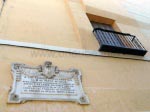
After a war of succession, the Bourbons took over the governance of Madrid under Carlos III. Their traces are visible in the late baroque arrangement, for example in many churches and the Italian construction style that appears from time to time. 1808 is a year that is still very present through many monuments and paintings (for examploe of Goya, "El 3 de Mayo de 1808 en Madrid"): the French marched in and rigorously took possession of Madrid. The rancorous fights of the Madrilenians was without success, many were killed.
In the year 1813, some minuteman against Napoleon and his occupying force successfully banished them out. After the proclamations of the Republic, also the heavy civil war of 1936 - 1939 and the dictatorship of the fachist Franco up to the year 1975 are remarkable in the history of Spain. After that, the monarchy returned with Juan Carlos I. In the year 2004, Madrid made the headlines due to some shocking events: as result of some heavy assassins, approximtely 200 people were killed. There are monuments in Madrid conmemorating them.
The language
In Madrid,people speak spanish, rather known amongst the Spanish people as Castellano (Castilian). Castellano is the Spanish language that is normaly tought in the schools, in courses and lesson books. The background of this is the historical development of Spain that resulted in the subdivision into different kingdoms. In other areas of Spain, one will notice that the language can strongly differ from Castellano, por example in Barcelona or Galicia.
The oftenly energical language melody are chracteristical for the way Spanish is spoken in Madrid as also many coloquial expressions that are also known in the rest of Spain but are almost exclusively used in Madrid. But a lot of Latin American people do live in Madrid who get adapted to the language but also automatically provide their language influence.
Contrary to other countries as Germany or even Scandinvia, very few English is spoken, not to mention any other foreign languages. But in the touristical areas, one can communicate in English and sometimes also in French. The guidances are always offered in Spanish and other languages, in mny bars, the waiter understands the order, as also the ticket seller of the subway station does. But anyway, one demonstrates some respect and interest to try to communicate at least with a few Spanish words.
The Religion - a Strong Influence
Today, the religiousity of the Madrilenians is a little hard to estimate. What is clearly visible is at least the religious direction that is the catholic religion. By going into a church, one will probably see more people there than in Germany. Older people, middle-aged people and a few young persons will be there. As Madrid is a place full of different nations, many are apparently still influenced by religion and visit the church service on a regular basis. The Madrilenians that also are originally from there are in an opposite phase of develpoment. Today, only a part of them do visit a church on a regular basis, a thing that was out of question in former times. This is recognizable in many ways, as for example the still conservative education of the eighties and the nineties and, earlier, in the numerous churches in which still today several church services per day take place.
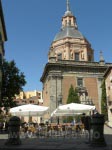
The religious influence is strongly noticeable in the Spanish and specially Madrilenian vocabulary: "Jesús" is a very popular name for a male, if one sneezes, "Salud" (health) is said to him or again "Jesús" and the term for the host is used either in an euphoric language as also in swearings.
At last, the extremely frequent bank holidays are noticeable. These bank holiday do have a religious background and are still today partly pompously celebrated - but I suspect that most of the Spaniards simply enjoy the celebration. Once, I heard a comment of a 20-year-old Spaniard that confirmed this: "Easter in Madrid is really beautiful. I am not religious and do follow everything simply due to the reason that the atmosphere is so nice. All these processions, the celebrations, the music, the food... it is simply easter."
The Madrileneans: An Interesting Mentality
Apparently, there is less contrast between the madrilenians and the Spaniards as elsewhere, for example as between people from Paris and the French people. But still there are differences between the Madrileņos and the Espaņoles. "Son chulos", Vicky says, she is from Tenerife and lives in Madrid since six years. What does "chulo" mean, a word that is oftenly heard in Madrid and with which the Madrileneans are described? It depends on the context and specially on the tone with which it is said. Used in a friendly tone, it means "pretty", "cool", "superb" or "excellent". But the way around, it has a completely different meaning in the sense of cheeky, perky, arrogant or even loudmouth. In the traffic or also during discussions one soon notices what is meant when one sees the sometimes the agressive attitude during driving or the wild gesticulations. Accordingly, the tone is also adapted if it is only about a slight difference in opinions or the transmission of good mood: the Madrilenean can't be missed and ignores that he sometimes does not have a friendly behaviour.
A really special and distinctive characteristic of the Madrileneans is their juvenescent. People are immediately on first name terms with each other, even though if people do not know each other, are more than 40 years old and ask for an information in a shop. Why is it so? It is probably the different life philisophy of the Spaniards and specially the one of the Madrileneans. The social contact is very important, many times, people leave their parents house after the 30th birthday (a thing that is also due to the reason the rents are very high), and life takes place outside. "The bar is the living room of the people from Madrid", said once my female friend amazed. By having a closer look to the bars, the comment is realy plausible: many times, the bars are cosily arranged, many bars have a TV, offer newspapers and - incredible- beds. What appears paradox is that, according to an unwritten law, the dirtier the bar, the better it is, because it means a lot of clients. And the more clients, the more one is confident to be in a bar with good tapas, excellent wines ect. This is why oftenly, there are cigarette butts, olive stones and toothpicks laying on the ground. What is very important is dining together and the community in general, a thing that gets visible in the food culture of the tapas and raciones (bigger tapa portions).
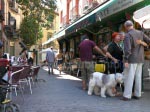
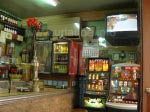
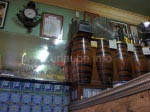
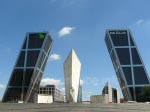
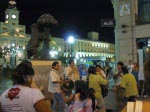
The social openness and heartiness stand in opposite to the aloofness the Spaniards sometimes talk about. Myself, I have only made some experiences with the people being grumpy in the morning, but less with aloofness. In Madrid it soon becomes clear that the city is a melting point of different nations: many immigrants from numerous countries and continents, but also many places of Spain do live in Madrid. But the families that do live in Madrid since several generations are rather rare here - it is just the opposite, many of them escape from Madrid and put up with commuting.
Specially the foreign immigrants provided the city with a multi-faceted nuance that makes Madrid appear open, vivid and versatil. For many people, Madrid is the "Gate to Europe", as for example for many Africans or for the Latinos, who can cope here better with their spanish - even if it is spoken in a different way - as in any other European country. It is interesting to see a lot of Asians in Madrid, more than in other cities like Barcelona. Among the immigrants there are also a lot of Europeans as for example Polish people, French, Czechs, Dutch and many Germans. The young people among them might be there due to an exchange program of the university or a practice; for others, it is the wish for the Spanish life and - as for many Spaniards too- the work is one of the most significant reasons. Madrid, the city of arts and paintings, is also a destination of numerous artists who seek for their break-through with their paintings, dance,photograhies and theatre.

Back to the index Madrid
Author: Stefanie Kotulla; Copyright 2008-2008: Patrick Wagner, www.tourist-guide.biz
|
 |